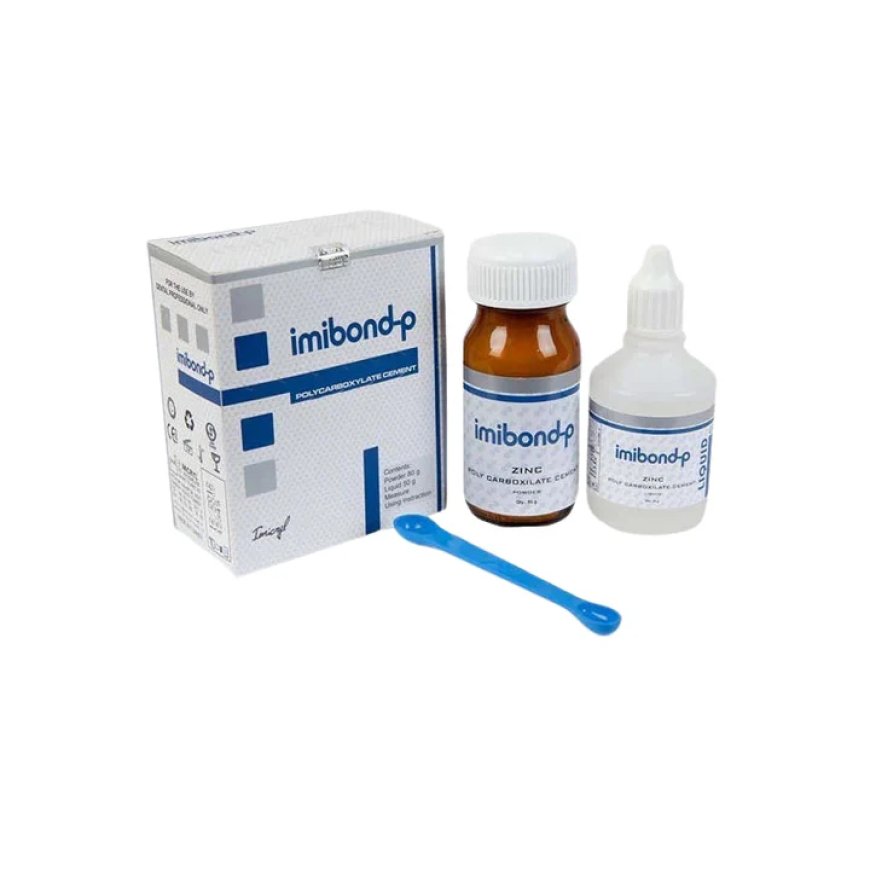Understanding Dental Cement: The Unsung Hero of Modern Dentistry
Dental cement is a group of materials used in dental procedures to bond, insulate, and protect. These cements come in various types and formulations, each designed for specific clinical applications.

Understanding Dental Cement: The Unsung Hero of Modern Dentistry
When we think about dental procedures, our minds usually go straight to the tools, drills, or even implantsbut behind every successful restoration lies an essential yet often overlooked material: dental cement. Whether it's fixing a crown, securing a bridge, or sealing a cavity, dentistry cement plays a crucial role in the long-term success of various dental treatments.
? What Is Dental Cement?
Dental cement is a group of materials used in dental procedures to bond, insulate, and protect. These cements come in various types and formulations, each designed for specific clinical applications.
From temporary fillings to permanent restorations, dental cement ensures everything stays in place while supporting oral health and function. Without it, many modern procedures wouldn't be possible.
? Common Uses of Dentistry Cement
Dental cements are incredibly versatile. Here are a few key applications:
-
Crown and Bridge Placement: Cement is used to bond prosthetic restorations to natural teeth or implants.
-
Cavity Liners and Bases: Cements can be applied under fillings to protect the pulp from thermal shock or bacterial invasion.
-
Orthodontics: Used for bonding brackets and bands in braces.
-
Temporary Restorations: Temporary cement holds fillings or crowns in place while a permanent solution is being made.
-
Luting Agents: They seal the space between the restoration and the tooth surface to prevent leakage.
? Types of Dental Cement
There isnt a one-size-fits-all solution in dentistry. Here's a breakdown of the most common types of dentistry cement:
1. Glass Ionomer Cement (GIC)
-
Bonds chemically to enamel and dentin.
-
Releases fluoride, promoting remineralization.
-
Commonly used in pediatric and restorative dentistry.
2. Resin-Modified Glass Ionomer Cement (RMGIC)
-
Offers better strength and moisture resistance than traditional GIC.
-
Suitable for high-load areas like molars.
3. Zinc Oxide Eugenol (ZOE)
-
Has soothing, antibacterial properties.
-
Ideal for temporary restorations and pulp protection.
4. Resin Cements
-
Very strong and aesthetic.
-
Perfect for ceramic restorations, veneers, and inlays/onlays.
5. Zinc Phosphate Cement
-
One of the oldest types, known for its rigidity and strength.
-
Still used in certain traditional applications.
? Choosing the Right Cement in Dentistry
Selecting the ideal cement depends on multiple factors, such as:
-
Type of restoration (temporary vs permanent)
-
Material of the prosthesis (metal, ceramic, composite)
-
Tooth condition and moisture control
-
Aesthetic expectations
The key is to choose a cement that balances strength, biocompatibility, and ease of application.
? Latest Innovations in Dental Cement
Todays manufacturers are going beyond the basics by creating:
-
Radiopaque formulas for better X-ray visibility.
-
Dual-cure systems (light and chemical curing).
-
Bioactive cements that support tooth remineralization.
-
Low-sensitivity options for post-procedure comfort.
Advancements in dentistry cement are enhancing clinical outcomes and patient satisfaction more than ever before.
? Final Thoughts
While it's easy to overlook the importance of dental cement, its impact on patient care is undeniable. From securing restorations to promoting healing, its one of the foundational materials of every dental practice.
For dental professionals, understanding the properties and indications of various dentistry cements ensures better clinical decisions and long-term success. And for patients, knowing the role of these materials can lead to greater confidence and peace of mind during treatment.

















![Top 9 Real Estate Mobile App Developers in Riyadh, Saudi Arabia [2025 Edition]](https://www.biphoo.uk/uploads/images/202507/image_430x256_6879d0d524335.jpg)





















